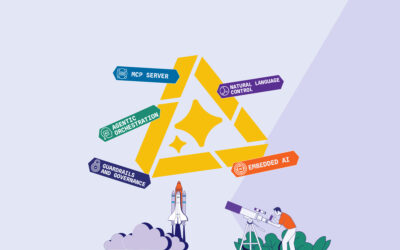Low-code/no-code technology is a huge buzzword in today’s insurance market. Seemingly every vendor is either talking about it or claiming to have it. But what is it, exactly, and how do the technology and business sides of insurance benefit from it?
Let’s start with what low-code/no-code is not.
First, “no-code” technology doesn’t really exist. All technology has some code behind it. You obviously need some way to communicate the goals and requirements of an application to a computer. Whether it’s defined using natural language, a modeler of processes, forms and rules, or some other method of codifying the intent of the users, there’s still a need for a formal definition model. It has to be correct and precise for it to be accurate, and the ultimate challenge is getting the business information and objectives codified for the computing platform.
The more comprehensive the repository of existing and reusable business components within the computing platform, the easier and faster the process of creating an application. But these components need to be coded and maintained, and the claims of “no-code” are basically glossing over the fact that you need to create these components first and then you need a mechanism to specify the users’ needs and intents to the machine to accurately reflect business requirements.
The alternative to “no-code” is “low-code,” which reduces the level of resources needed to create the application and evolves it to complex components and features so that you have a library of components that can be assembled to create an application. That’s a reasonable goal. Focusing on building reusable components that address the needs of insurance applications makes solving problems smaller and more manageable.
That brings us to what low-code technology really is: a way to solve pain points and increase collaboration. Low-code technology supports an Agile business model, where business and IT departments can collaborate better. Low-code tools bridge the gap between the IT and business sides and speed up the development process, creating a truly iterative and agile process.
Low-code technology combined with Agile methodology help the business and IT sides of an insurance company work together to deliver end results faster and with fewer resources. It means less frustration on everyone’s part, cost savings, and faster speed to market.
What to Look for in a Low-Code Solution
Low-code technology has to be easy for the business side to understand: a user-friendly environment is required, and simplicity is key. Carriers shouldn’t be afraid of low-code, but they should make sure it supports what they need, that business and IT can collaborate and develop applications and changes, and that it can handle the required complexity and be leveraged across the insurance value chain. It must show business users what the application will look like in the shortest amount of time for them to validate the user experience and functionality to reduce the amount of re-work.
In today’s world, online interfaces change constantly, so having a great user experience with tools that support you is important. Every user experience should be optimized for the specific users’ needs and roles. With low-code, it takes less time to build an application, and specific applications can be built for each role, helping adapt the user experience for each persona.
The insurance industry is constantly striving to improve collaboration and break down walls between siloed departments, especially with IT. IT departments have a lot on their plates, between running infrastructure, maintenance and supporting users. The more they can do with the tools they have available to them, and the more those tools can make the IT department look like superheroes, the better. With low-code technology, the collaboration between IT and the business side gets reestablished, and that constant delivery of capabilities reinforces IT’s value to the organization.
The magic of low-code is that it simplifies complex application development processes, which insurance applications are typically all about. Adopting low-code technology requires adopting new methodologies. If you know the benefits you’ll gain from it and apply the right skill set, the opportunities are endless.




